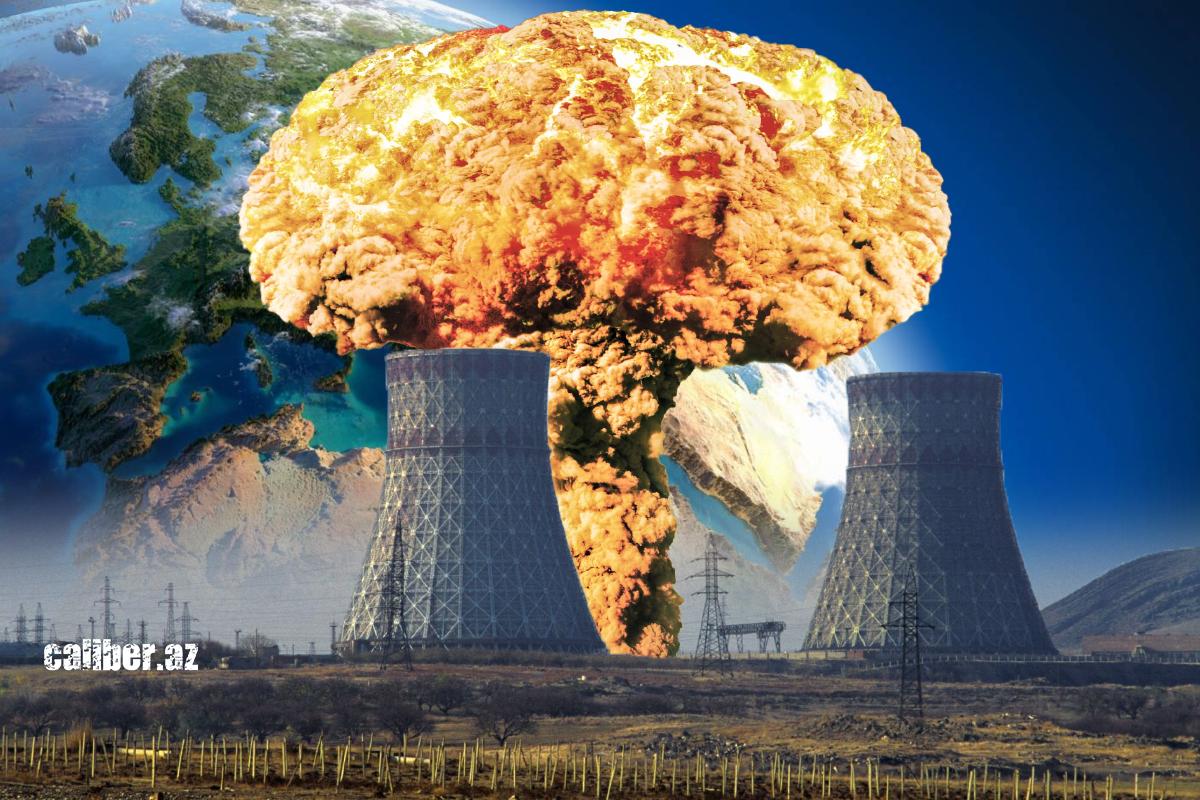IAEA ignores nuclear dangers of Armenia's aging Metsamor NPP Double standards
Armenia shows "enviable" persistence in the issue of further operation of the morally and physically outdated Metsamor NPP and thus continues to expose the region to radioactive danger with the tacit assistance of the International Atomic Energy Agency (IAEA). Thus, during the meeting between the Armenian Foreign Minister and the Director General of the International Atomic Energy Agency Rafael Grossi, Yerevan actually again received the IAEA's support for the extension of the NPP's operation.
Ahead of this meeting, speaking at an international conference on nuclear safety in Vienna on May 20 on "Shaping the Future," the Armenian minister said that Armenia had decided to extend the life of the current unit until 2036, with the ultimate goal of a smooth transition to the new capacity. At the same time, the Armenian minister cited the fact that Yerevan is allegedly fully complying with the international obligations defined by UN Security Council Resolution 1540.
To expose the Armenian Minister's statements as a lie would require an appropriate remark. Security Council resolution 1540 (2004) decided that all States shall refrain from providing any form of support to non-State actors that attempt to develop, acquire, manufacture, possess, transport, transfer or use nuclear, chemical or biological weapons and their means of delivery, in particular for terrorist purposes.
The Metsamor nuclear power plant is, as is well known, a State-owned facility, which already shows that the resolution to which Mirzoyan appeals has nothing to do with the operation of this source of nuclear danger, which is also used, inter alia, for the purpose of smuggling radioactive materials by Armenian citizens. This is confirmed by a number of facts, some of which we cite below. Does Armenia comply with all these requirements of the resolution? Unequivocally, no. And this is not an unsubstantiated assertion, but a reality enshrined in many facts confirming the smuggling activities of Armenian citizens to export radioactive materials from the Metsamor nuclear power plant. We will cite several such examples.
Thus, according to open sources, in December 2001, 300 gr of low-enriched uranium brought from Armenia was intercepted in the Georgian region of Samtskhe-Javakheti, and in June 2003, Armenian citizens tried to smuggle 170 gr of highly enriched uranium U-235 across the Armenia-Georgia border (Sadakhlo-Bagratashen checkpoint), but were detained by Georgian law enforcement agencies.
In December of the same year, a container with radioactive substance Strontium-90 taken from the Metsamor NPP was detained at the Armenian-Iranian border. Spectral analysis showed that the object was highly radioactive.
In October 2007, at the Georgian-Turkish border (Sarpi checkpoint), 2.04 gr of lawrencia-103 was found in a specially made of gold container, for which four Armenian citizens were detained.
In March 2010, businessman Smbat Tonoyan and an employee of the Yerevan Physics Institute Hrant Ohanyan were detained in Tbilisi on suspicion of illegal sale of radioactive materials, and 18 gr of uranium enriched to 89 per cent were seized from them.

In September of the same year, a criminal group, one of whose members was Armenian, was detained at the Tbilisi airport. During the search of the detainees, 0.0004 kg of plutonium (Pu) and 0.00008 kg of low-enriched uranium were found and seized. During the investigation, it became clear that the criminals planned to sell the radioactive materials.
In August 2014, at the border between Armenia and Georgia (Sadakhlo-Bagratashen checkpoint), Georgian customs officers arrested two Armenians trying to smuggle radioactive substance Cesium 137 into Georgia. In January 2016, at the border between Armenia and Georgia (Sadakhlo-Bagratashen checkpoint), Georgian customs officers arrested three Armenians trying to smuggle Cesium 137 radioactive substance into Georgia.
Thus, it is obvious that this far from complete list of facts casts doubt on the declarative statements of the Armenian authorities about Armenia's alleged fulfillment of its obligations to the IAEA. In such a situation, a reasonable question arises to the IAEA itself. How is it possible that this agency is concerned about microplastic pollution in the distant Antarctic, but at the same time persistently turns a blind eye to the obvious threat in the region of the South Caucasus, actually right next door? Is this not again a manifestation of the notorious double standards? The answer is rather affirmative.
There is another issue that still remains outside the IAEA's attention. This is Armenia's contamination of Azerbaijani rivers with heavy radioactive metals. It is known that as a result of the activity of the Metsamor nuclear power plant alone, 12,000-16,000 cubic meters of radioactive waste are discharged into the Araz River every day, which poses a threat to the use of river water as a drinking and irrigation source.
Meanwhile, pollution of water resources of the regional countries by Armenia grossly violates the principles of the UN Convention on the Protection and Use of Transboundary Watercourses and International Lakes. Moreover, the level of pollution of the Okhchuchay flowing into the Araz River poses a great threat.
Azerbaijani President Ilham Aliyev has repeatedly said that the Metsamor NPP creates nuclear safety problems for the region. In particular, when receiving IAEA Director General Rafael Mariano Grossi in last March, Ilham Aliyev said that the Metsamor nuclear power plant operating in Armenia poses a great threat to Azerbaijan, Türkiye and the entire region, drawing attention to Armenia's illegal trade in some nuclear materials obtained through the Metsamor NPP.
The IAEA should not discount the fact that the presence of a dangerous radioactive source on the territory of Armenia in the event of an emergency could have unpredictable consequences not only for the South Caucasus states, but also for Europe.








